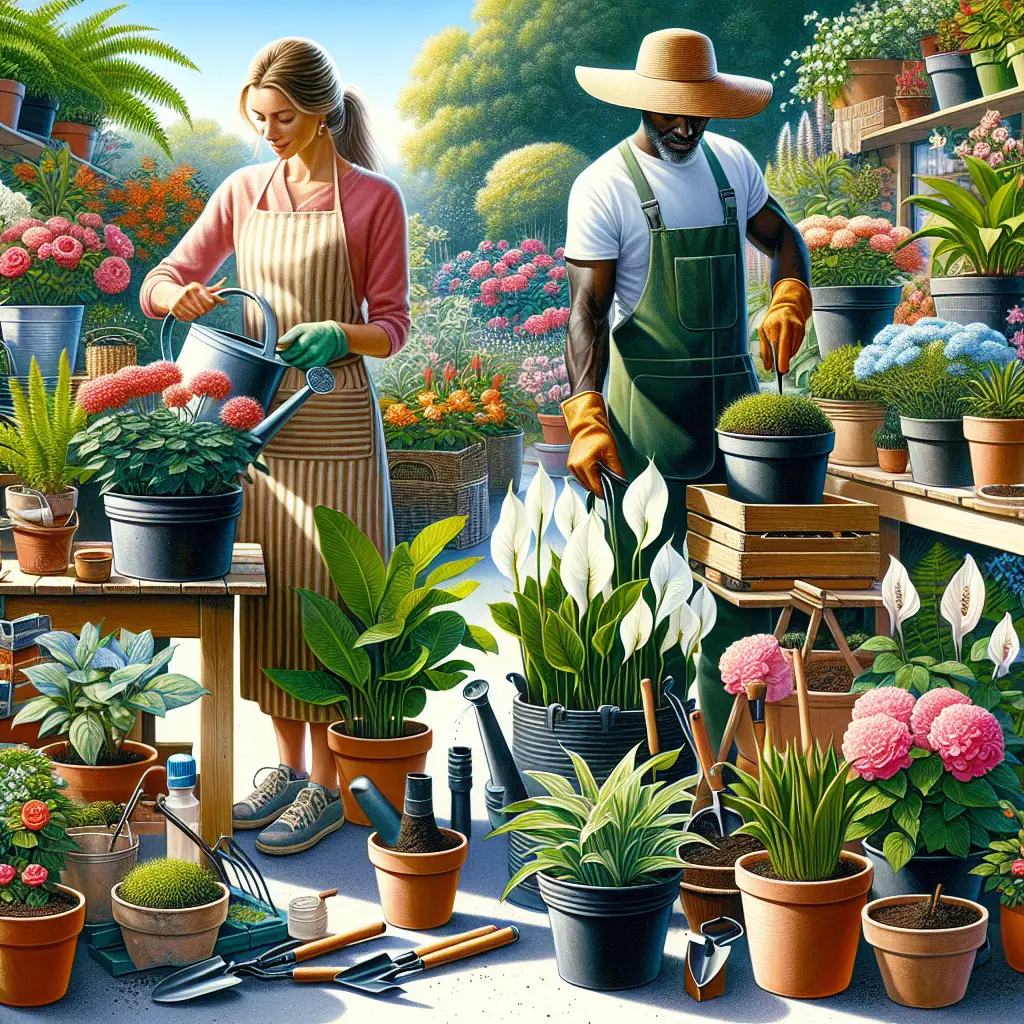Essential Tips for Caring for Potted Plants
Are you someone who relishes the sight and presence of greenery indoors but finds that no matter what you do, your potted plants never seem to flourish? If that rings true, you’re not alone. Many garden enthusiasts face challenges when it comes to nurturing plants within the confines of a container. Luckily, with a few essential tips, you’ll be on track to keeping your potted plants happy, healthy, and visually pleasing. Right from selecting the right soil to acing the watering game, let’s dive into the green-thumb strategies that can turn you into a potted plant pro!
Select the Right Container
The first tip is deceptively simple: choose the right container. The size, material, and drainage capabilities of your pot greatly affect the health of the plant it houses. Generally, it’s better to go for pots with drainage holes to prevent waterlogging, which can lead to root rot. Materials like terracotta or clay are porous and allow the soil to breathe, which is beneficial for many plant types (University of Illinois Extension).
Use Quality Potting Mix
Not all soil is created equal, especially when it comes to potted plants. Garden soil is a no-go; it’s too dense, can contain weed seeds and pests, and doesn’t drain well in a confined space. You need a quality potting mix that provides a light, nutrient-rich environment for your plants. Look for mixes containing peat, pine bark, and perlite or vermiculite (Penn State Extension).
Understand Watering Needs
Overwatering is the leading cause of death for indoor plants. This problem can be combated by understanding the unique watering needs of each plant and checking the moisture level of the soil before each watering. A good rule of thumb is to water when the top inch of soil feels dry. For a comprehensive guide to watering techniques, check out The Sill’s expert advice on plant hydration.
Provide Proper Light
Light is to plants what food is to humans. Insufficient light can hinder growth, cause the plant to become ‘leggy,’ and reduce flowering. Know your plant’s light requirements. Is it a shade-loving fern or a sun-thriving succulent? Place your plant in an appropriate spot and consider rotating it regularly for even growth. NASA’s Clean Air Study can help you identify which plants are best for the light available in your space.
Feed Your Plants
Plants in pots live in a limited amount of soil, so they can quickly exhaust the nutrients available to them, making it important to fertilize. Use a balanced, water-soluble fertilizer every few weeks during the growing season and less often during the winter. There are organic options, such as fish emulsion or compost tea, which can be gentler on plants while providing a nutrient boost.
Prune and Clean
Regularly prune your plants to remove dead or dying foliage and to encourage new growth. This practice also includes ‘deadheading,’ or the removal of spent flowers, which can stimulate certain plants to produce more blooms. Keeping your plants clean is equally important; dust can block sunlight, so wipe leaves with a damp cloth or give them a gentle shower occasionally.
Repot When Necessary
Plants grow, and sooner or later, they will outgrow their pots. This commonly manifests as slower growth, roots poking out of the drainage holes, or when you notice the soil drying out faster than usual. When it’s time to repot, select a new container that is only a few inches wider in diameter than the old one. Here’s a user-friendly guide from Better Homes & Gardens that walks you through the repotting process.
Monitor for Pests
Even indoor plants aren’t immune to pests. Common critters like aphids, spider mites, and mealybugs can throw a wrench into your plant care routine. Inspect your plants regularly for signs of infestation, like sticky residue or webs. If pests are found, isolate the infected plant and treat it accordingly. Neem oil or insecticidal soaps are effective remedies for many common pests.
Vacation Care for Plants
If you travel frequently, setting up a self-watering system or investing in a plant nanny can keep your plants from drying out. Some self-watering pots can be a lifesaver for thirsty plants, or you might prefer DIY options like water spikes or globe waterers.
Be Patient and Observant
Finally, remember that each plant is different. What works for your peace lily might not work for your cactus. Observe your plants and learn from them. Note how they respond to changes in care or environment and adjust your methods accordingly.
Armed with these tips, you should feel more confident in your ability to care for your potted plants. Remember that gardening is both an art and a science, and with practice, your thumb will get greener. Don’t forget that your local nursery and online communities can be incredible resources for advice and support. Now, let those potted wonders thrive!
As you’ve seen, caring for potted plants involves a balance of science, attention, and a splash of love. Whether you are starting your collection or aiming to perfect your current setup, the journey towards a thriving indoor oasis is truly rewarding. Happy gardening!


